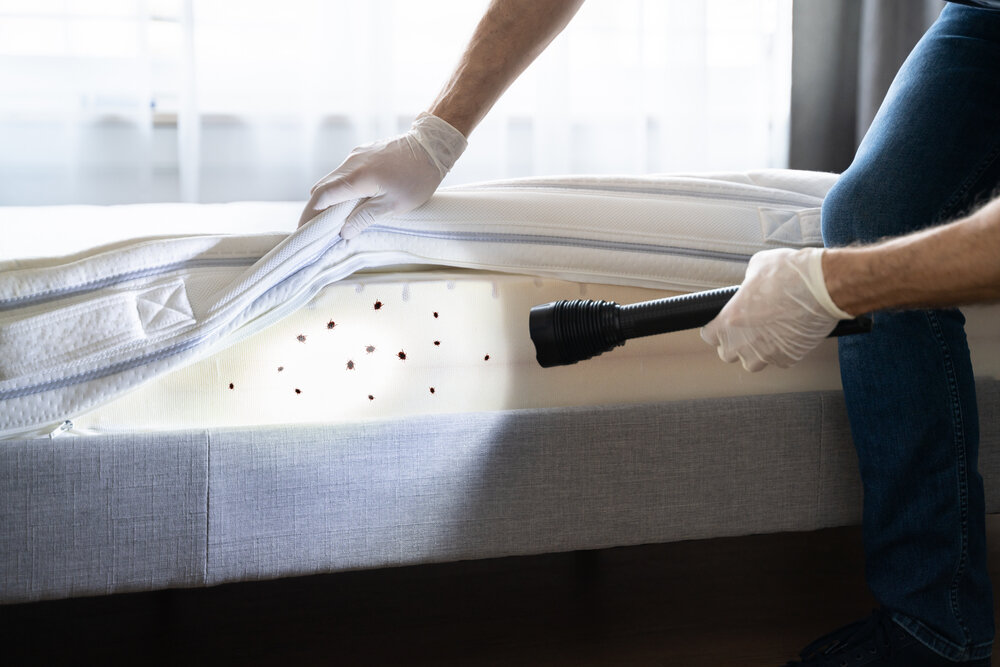Checking Out the Science Behind Bed Insect Heat Treatments as a Sustainable Bug Monitoring Strategy
In the world of pest administration, the quest for effective and lasting solutions remains a continuous search. One such method that has actually gained traction in the last few years is making use of warmth treatments to battle bed pest invasions. By harnessing the science behind thermal fatality factors for these persistent bugs, heat treatments provide an encouraging alternative to conventional chemical-based strategies. The intricacies of how warmth effectively removes bed bugs and the wider implications for lasting insect management methods make this a topic worth checking out further.
Bed Insect Warmth Treatment Process

Thermal Fatality Factor for Bed Bugs
Revealing bed pests to raised temperature levels past their thermal resistance array is essential for achieving effective removal in heat treatment procedures. By getting to and preserving temperature levels over the thermal death factor for bed pests, parasite monitoring experts can make sure detailed elimination of bed insect populations, including hard-to-reach locations where chemical therapies might be less reliable. Comprehending the thermal death factor for bed insects is important for applying successful warm treatment techniques and attaining sustainable bug monitoring end results.
Advantages of Heat Treatments
Having actually developed the essential thermal death point for bed bugs, it is critical to now check out the substantial advantages that warmth therapies supply in effectively removing these resistant pests. One of the primary advantages is that warm can pass through deep right into gaps and splits where bed pests hide, guaranteeing that even the most hard-to-reach areas are heated up to dangerous temperature levels.
Furthermore, warm treatments are eco pleasant and safe, making them a lasting pest management technique. Unlike chemical pesticides, warmth therapies do not leave hazardous deposits that can posture risks to human health and wellness or the environment. This facet is especially important in delicate atmospheres such as health centers, institutions, and suburbs where chemical usage may not be desirable.
Additionally, heat therapies have a high success price in removing bed insect invasions in a single treatment, decreasing the need for multiple gos to and minimizing disruption to owners. This performance not only saves time and cash yet likewise offers assurance to those dealing with bed bug troubles.
Efficiency of Heat Therapy

Warm treatments have actually the added advantage of eliminating bed pest eggs, which are frequently resistant to standard chemical therapies. On the whole, the performance of heat treatments in eradicating bed bug problems makes them a sustainable and dependable insect management technique.
Sustainable Parasite Monitoring Conveniences
Implementing lasting bug administration practices offers lasting advantages for both the setting and public wellness. By using methods such as warmth therapies for insect control, we can minimize the reliance on damaging chemical pesticides that can have unfavorable results on ecological communities and human health and wellness - exterminator. Lasting insect monitoring methods help in preserving biodiversity by targeting details insects without harming non-target microorganisms, thereby keeping a balanced ecological community
Moreover, sustainable bug management techniques add to the overall health and wellness and well-being of the general public. By reducing direct exposure to harmful chemicals made use of in traditional bug control approaches, heat therapies provide a much safer alternative for bug monitoring in property, business, and public spaces. This decrease in chemical use also aids in stopping chemical residues from contaminating soil, air, and water, safeguarding environmental quality.
Final Thought
To conclude, bed pest heat treatments have been revealed to be a sustainable and efficient parasite management approach. The thermal fatality point for bed bugs makes them vulnerable to warmth treatments, which have various advantages over standard chemical therapies. The effectiveness of heat treatments in getting rid of bed pest problems while minimizing environmental effect highlights the possibility of this approach as a sustainable option for parasite control.
The bed insect warm therapy procedure includes increasing the temperature level within plagued locations to a level that properly removes bed pests and their eggs. By getting to and maintaining temperatures above the thermal death point for bed pests, parasite monitoring specialists can make certain thorough removal of bed insect populaces, including hard-to-reach locations where chemical therapies may be less effective. One of the key advantages is that warmth can bed bug treatment permeate deep right into splits and crevices where bed insects hide, making certain that also the most hard-to-reach areas are warmed to lethal temperatures. Unlike chemical therapies that might leave behind resistant populaces, heat treatments offer a ecologically pleasant and safe solution that can pass through deep right into furniture, walls, and various other hard-to-reach locations where bed pests conceal.
The thermal fatality factor for bed pests makes them at risk to warmth therapies, which have countless benefits over typical chemical therapies.